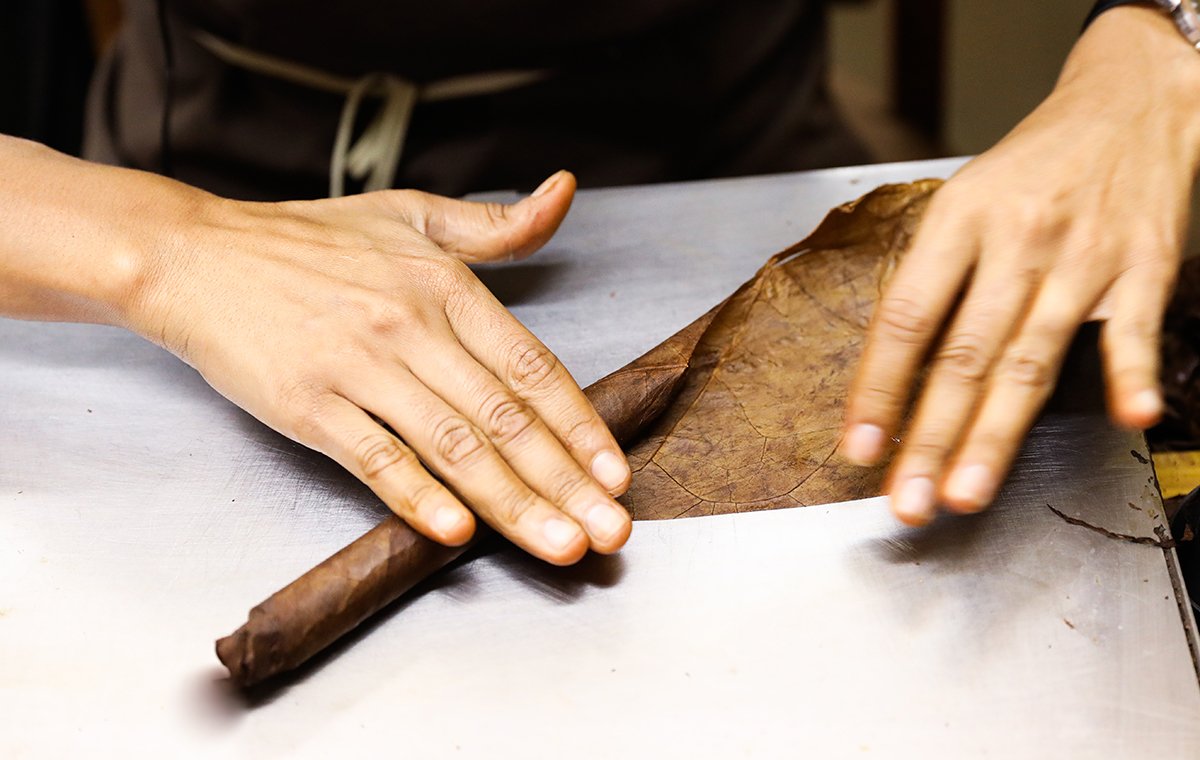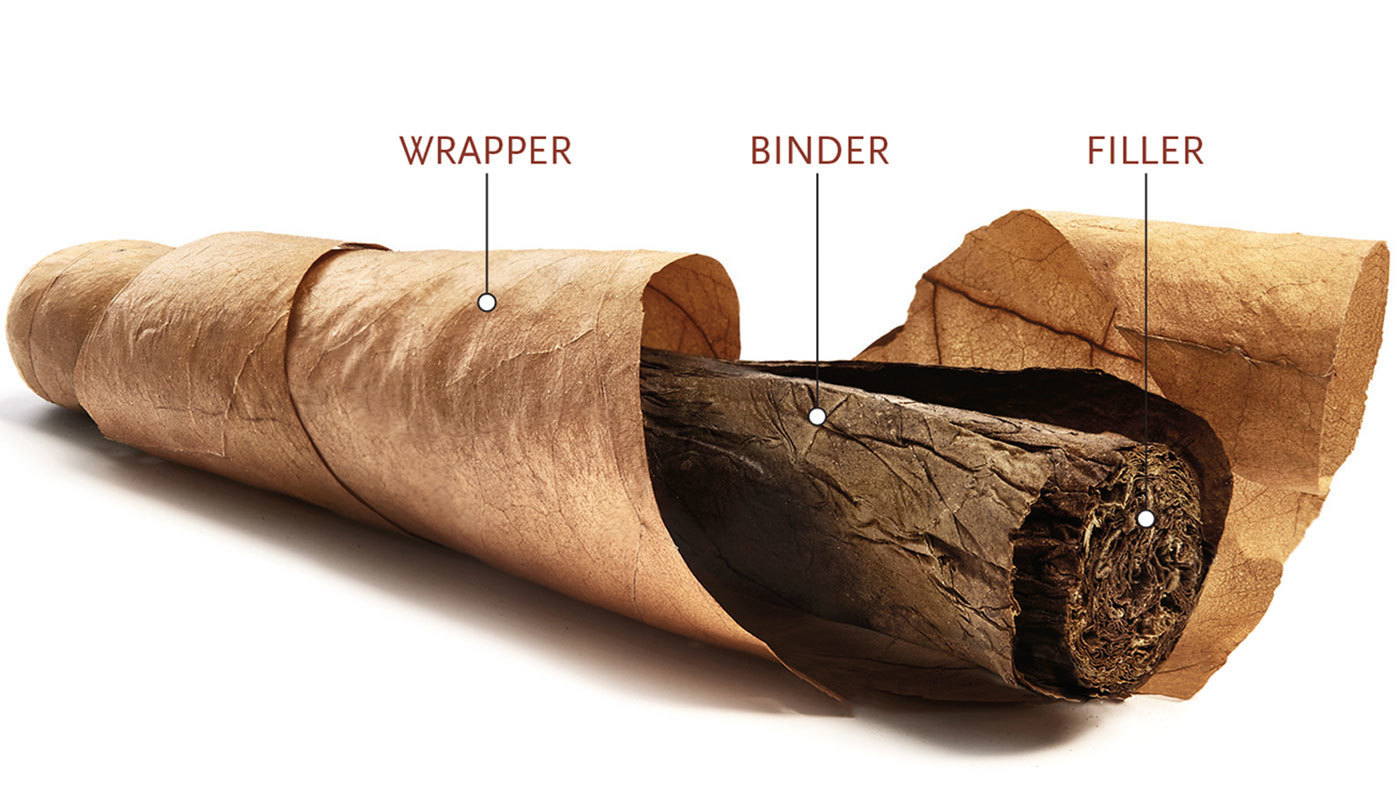BY ALEX JACKSON
Premium handcrafted cigars often create a sense of excitement. Like wine or any fine beverage, the construction of a cigar is a meticulous and time-consuming process. Each part of the cigar is carefully crafted by the best cigar rollers and has a crucial role in the experience of smoking. Generally, a genuine handmade cigar is made of at least three different tobacco varieties often referred to as filler, binder, and wrapping. All the flavour differences in cigars come from minor variations of these elements. You will be spending quality time with a quality product, and it will be to your benefit to reflect upon its creation before lighting up.

1. The Wrapper
The wrapper is the exterior component of the cigar you see and is responsible for making the cigar look appealing to sight and touch. The wrapper is made from a tobacco leaf, and connoisseurs can usually tell where the plant was grown and even the tobacco varieties based on some regional variations. An attractive wrapper is a thin and delicate leaf with few visible veins and a smooth texture.
Cubans will argue that the wrapper or “capa” only plays an aesthetic role, while others claim that the wrapper accounts for at least half of the cigar’s flavour. An interesting aspect of the wrapper is that you can tell the strength of the taste and the ageing period based on its colour. The lighter the colour, the lighter the cigar’s taste and the stronger the darker. The wrapper also accounts for 60% to 90% of the cigars’ flavour. It holds a lot of the aroma of the cigar. Many cigar lovers use the cold draw technique to taste the cigar before they light it up. The aroma they taste as they draw in from the cigar is mostly from the wrapper and not necessarily from the tobacco.
2. The Binder
The binder, a robust tobacco that has a texture reminiscent of parchment, is located just below the wrapper, and it has the function of keeping in place the tobacco filler. As the wrapper is both fragile and delicate, it is not sturdy enough to carry the contents of the cigar alone. Thanks to hand-rolling techniques, this special part of the cigar remains in place and usually, no glue is being used. This portion of the cigar often plays a role in guiding the burn. Genuine Cuban cigars are burned evenly and slowly, leaving ash that resembles salt and pepper.

3. The Filler
The filler of the cigar is the tobacco you smoke and accounts for the majority of a cigar’s tobacco. Based on the type of cigar, it can be made from a single batch of tobacco, giving the cigar a uniform taste, or it can be a well-blended selection of different tobacco primings. There are a multitude of batches used and expertly blended in order to make a certain aroma, which is why the blending recipes of many producers are well-kept secrets to preserve the prestige of the cigars. The filler tobacco can be pressed in various types, granting it several characteristics. If the cigar has a higher tobacco density, the draw is fuller and the smoke strength is higher, while a loosely pressed cigar is lighter and the draw is easier. The cigar also consists of two types of filler, long and short. The length of a cigar’s filler is often indicative of its quality, which is why the longer filler is used in the rolling of most premium handmade cigars. Cheaper machine-made cigars typically consist of short filler, which are small pieces of tobacco and are sometimes treated with chemicals to adjust the flavour.
4. The Head and Cap
The cigar’s head is the capped area that you put in your mouth, and it is made from the same tobacco as the wrapper. When you are ready to smoke your cigar, you must cut the cap, the very tip of the head, so that you can draw through it. The goal in making this cut is to create a smooth opening without compromising the integrity of the cigar, thus keeping the break clean and not frayed. You want to cut off enough for a smooth draw, but not so much that you cut into the main wrapper and risk unravelling it. There are several ways to cut a cap by either punching a hole, making a V-shaped incision or carefully slicing part of the cap off. Slicing is the most common method. The transition between the body of the cigar and the cap is a delicate line called the seam, which marks where you should stop smoking a cigar.
5. The Foot
The foot is the part reserved for lighting, preferably with a butane lighter or cigar specific match. A powerful flame that will evenly light the whole edge will help you to have an even burn and a delicious draw. Never letting the flame touch the cigar, light the foot by holding the cigar at a 45-degree angle over the flame, about three to four inches from the tip of the cigar (depending on the height of the flame). Remember to rotate the cigar while slowly puffing on it to prevent an uneven burn. You can gently blow on the foot to ensure a complete lighting.
